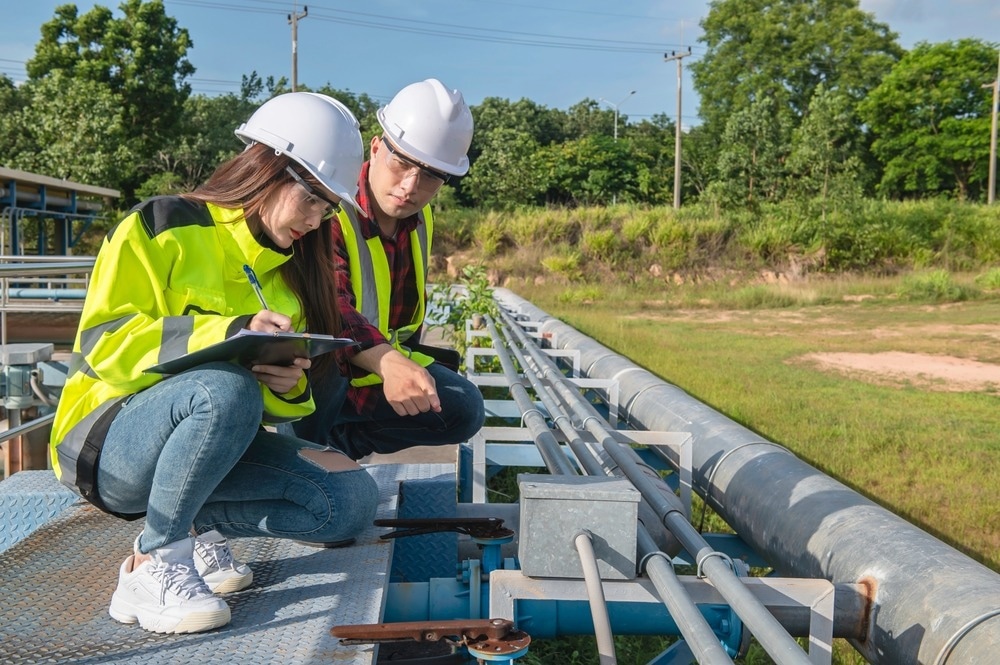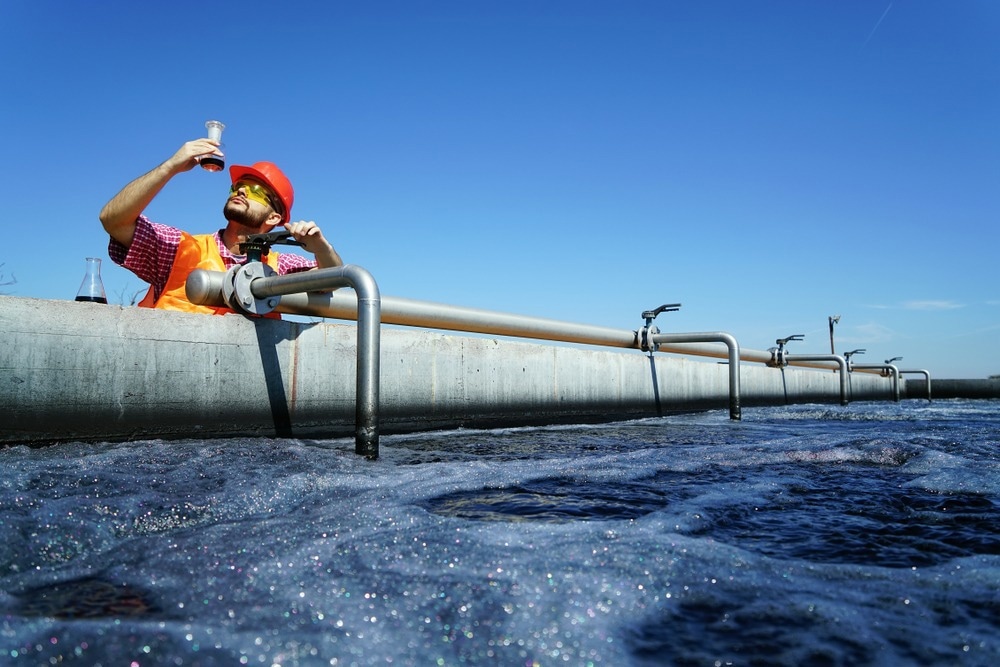With continuing population explosion and an increase in industrialization, the need for water is estimated to increase by 400% before the end of 2050. The pressing need to make treated wastewater reusable for industrial and domestic purposes has continued to fuel the need for more efficient and eco-friendly treatment methods.

Study: Image Credit: kittirat roekburi/Shutterstock.com
Most conventional wastewater treatment methods, such as flocculation and coagulation, use chemicals such as aluminum chloride and polyelectrolytes. This physicho-chemical treatment approach generates a tremendous amount of sludge that constitutes an environmental nuisance. In addition, most developed and developing countries have stringent regulations on managing industrial and domestic effluents.
Significant progress has been made over the years, as has been reported in many studies. Chemical precipitation, Nano-filtration, Algae Treatment Mechanism, Reverse osmosis, Ion exchange, Ultrafiltration, and Biosorption Methods are among the most recent wastewater treatment methods that have been in use recently. In the following sections, we shall explore some of these emerging trends.
Recent Advances in Modern Wastewater Treatment Methods
In recent years, several studies have considered wastewater treatment mechanisms, and many of the methods have been successfully employed on an industrial scale to decontaminate effluents. In 2018, the Journal of Water reviewed the current methods developed for wastewater treatment. The primary focus of the study was on membrane treatment operations and revealed foul smell as the significant challenge of membrane treatment for wastewater.
In another study published in the Journal of Environmental Technology Reviews, the authors explored the possibility of wastewater treatment using Microbial Fuel Cells (MFCs). This method has the unique advantage of utilizing microorganisms in wastewater to generate power to drive industrial processes and, in the same vein, decontaminate the wastewater. In this method, organic substances are oxidized by microorganisms in wastewater. This causes the flow of electrons, which generates electric power. Among all the substrates used to drive the MFCs power generation, wastewater has been shown to be the most sustainable, owing to its correct organic constituent and cheapness.
Various types of exoelectrogenic bacteria in wastewater can oxidize organic matter and transfer electrons to the fuel cell's anode without mediators. When oxidizing the organic matter, the microorganisms are reduced and can then be removed through other filtration processes.
In a study published in the International Journal of Engineering Research and Technology in 2021, the authors reviewed many advancements in wastewater treatment. These studies focused on nano-filtration, Algae Treatment Mechanisms, and Biosorption Methods. The nano-filtration method is a membrane filtration process. The basic principle involved in this method is the exploitation of the ability of bonding agents to cause the formation of heavy metal cationic complexes. The complexes formed are a product of the heavy metals and the coagulated particles in the wastewater. The bond formation increases the molecular weight; hence, the contaminants' size gets bigger than the pore of the membrane used for the separation.

Image Credit: Avatar_023/Shutterstock.com
The primary advantage of the nano-filtration technique includes low energy requirement, high separation selectivity, and fast reaction kinetics. These advantages, coupled with the flexibility of preparation and the variety of raw materials, which can be used for nano-filtration, are expected to increase its usage for wastewater treatment in the future.
The algae treatment mechanism has been extensively used in the last five decades. It is based on the principle that microorganisms can eliminate toxic substances such as Zinc, Selenium, and Arsenic in an aquatic environment. They achieve this by voraciously feeding on and accumulating these materials inside of them. Many algae, such as Spirogyra, can accumulate radioactive materials.
Thus, they can be effectively employed to treat effluents from various industrial processes. The primary advantage of algae wastewater treatment is its environmentally-friendly nature. This type of water cleaning is organic and the most environmentally compatible water cleaning method considering that it does not introduce any foreign material into the environment. It is also a very effective means of feeding microorganisms to ensure their continued survival and contribution to the sustainability of the ecosystem. The method also has the advantage of being very cheap to run with abundant raw materials.
Biosorption is a physicochemical process that occurs naturally in certain biomass, allowing it to passively concentrate and bind contaminants in the wastewater onto its cellular structure. In this method, biological materials accumulate heavy metals from the wastewater through a metabolically mediated pathway uptake. One of the significant advantages of this method is that it does not require energy input. However, the number of contaminants a solvent can eliminate depends on the kinetic equilibrium and composition of the cellular sorbent surface as the contaminants are adsorbed onto the cellular structure.
More from AZoM: What is the Function of Isotopic Analysis?
Reference and Further Reading
Anastosios, Z. I., Ioannis, A. K., (2019). Recent Advances in Water and Wastewater Treatment with Emphasis in Membrane Treatment Operations. The Journal of Water, Volume 11, Issue 45. https://www.mdpi.com/2073-4441/11/1/45
Marzieh, A., Mehrdad, F., Azam, J., David, B. (2015). Effective factors on the performance of microbial fuel cells in wastewater treatment – a review. Journal of Environmental Technology Reviews. PP: 2162 – 2523. https://dx.doi.org/10.1080/09593330.2015.1077896
Jayalekshmi, S. J., Minnu, B., Jithin, S., Muhammad, A. (2021). Wastewater Treatment Technologies: A Review. International Journal of Engineering Research and Technology (2021). Volume 9, Issue 9. PP: 2278 – 2281.
https://www.ijert.org/wastewater-treatment-technologies-a-review).
Mathuriya A., S. (2013). Inoculum selection to enhance performance of a microbial fuel cell for electricity generation during wastewater treatment. Journal of Environmental Technology. Volume 34. PP: 1957 – 1964. https://www.researchgate.net/publication/259385211_Inoculum_selection_to_enhance_performance_of_a_microbial_fuel_cell_for_electricity_generation_during_wastewater_treatment
Disclaimer: The views expressed here are those of the author expressed in their private capacity and do not necessarily represent the views of AZoM.com Limited T/A AZoNetwork the owner and operator of this website. This disclaimer forms part of the Terms and conditions of use of this website.